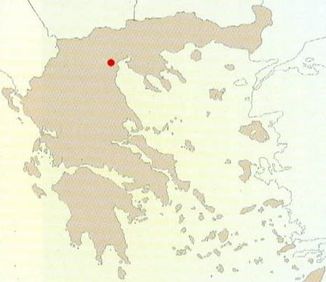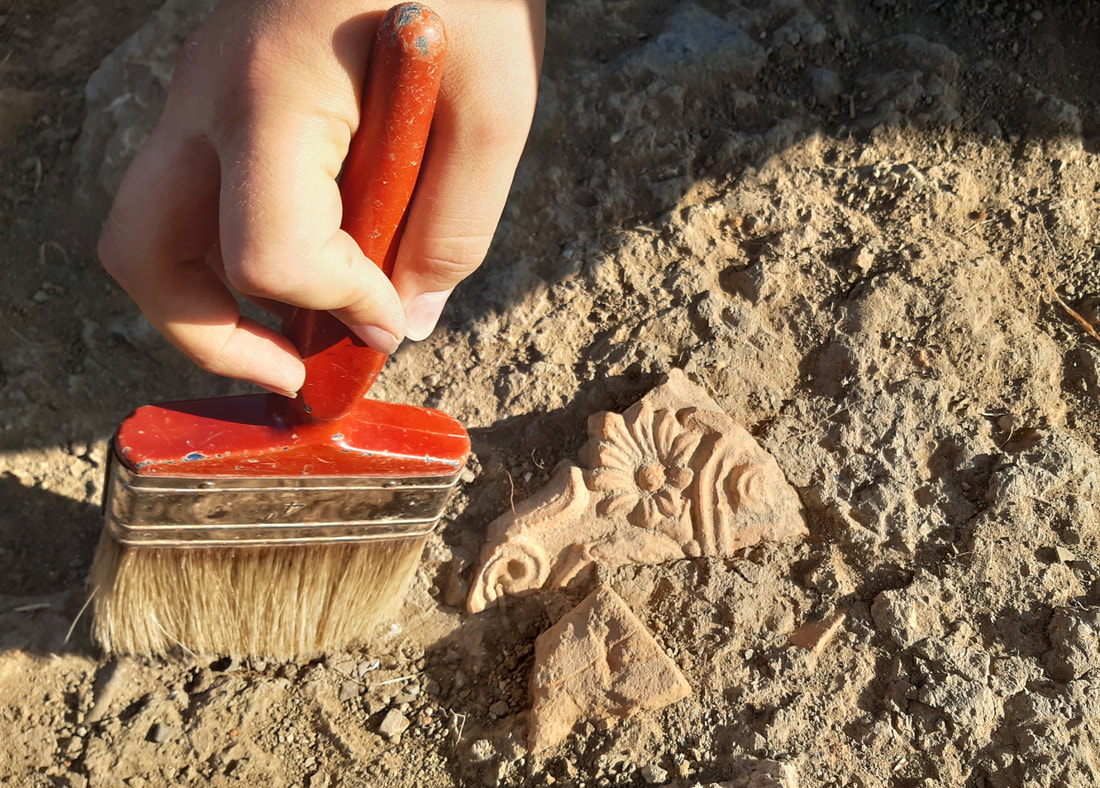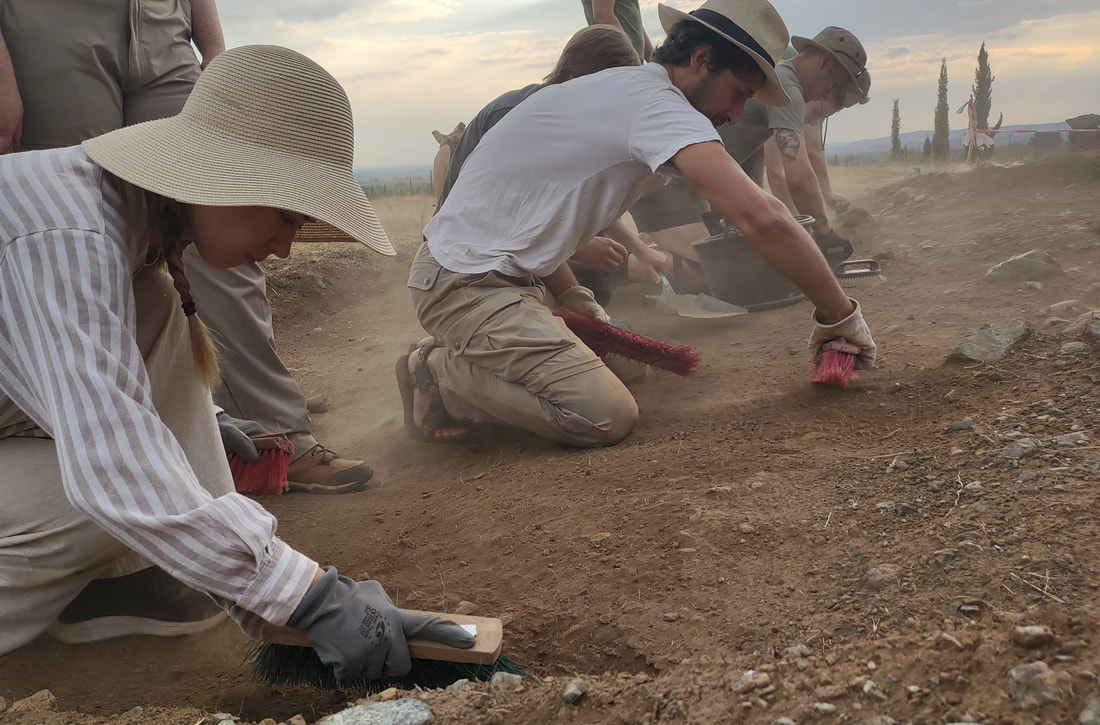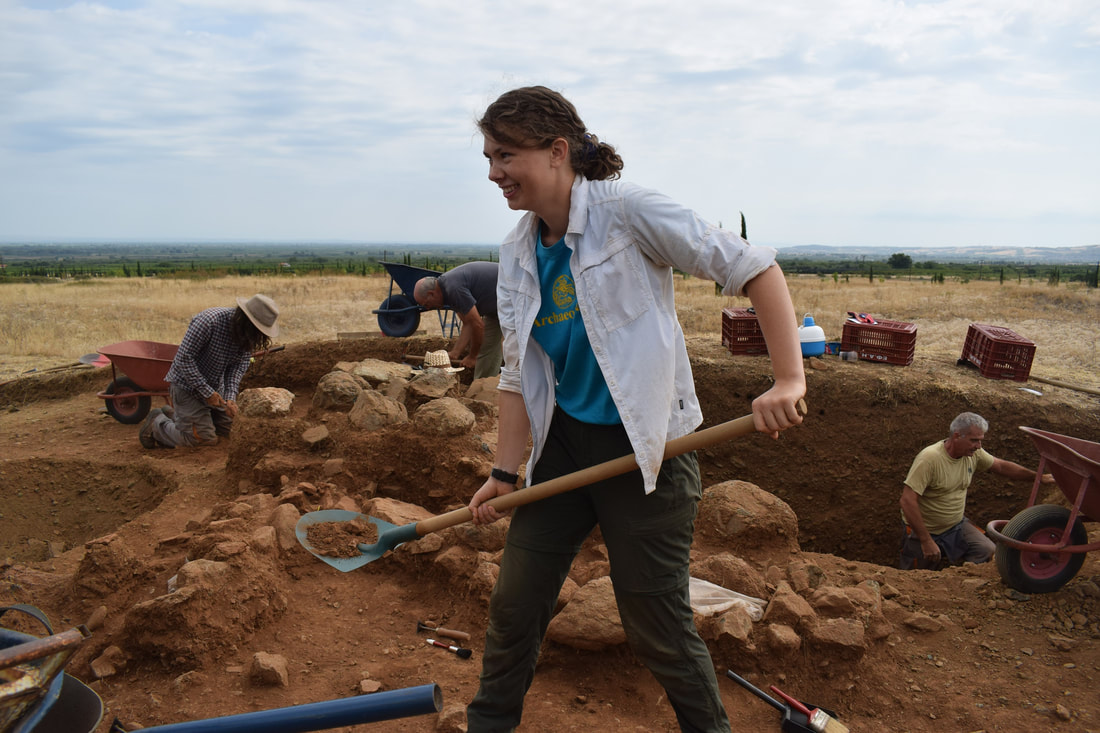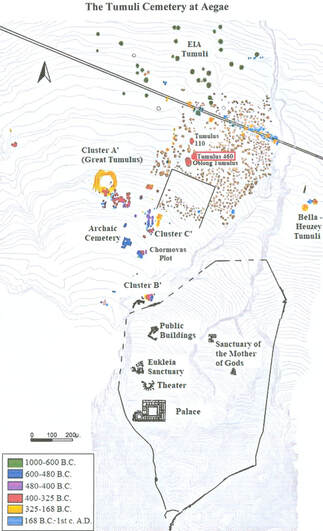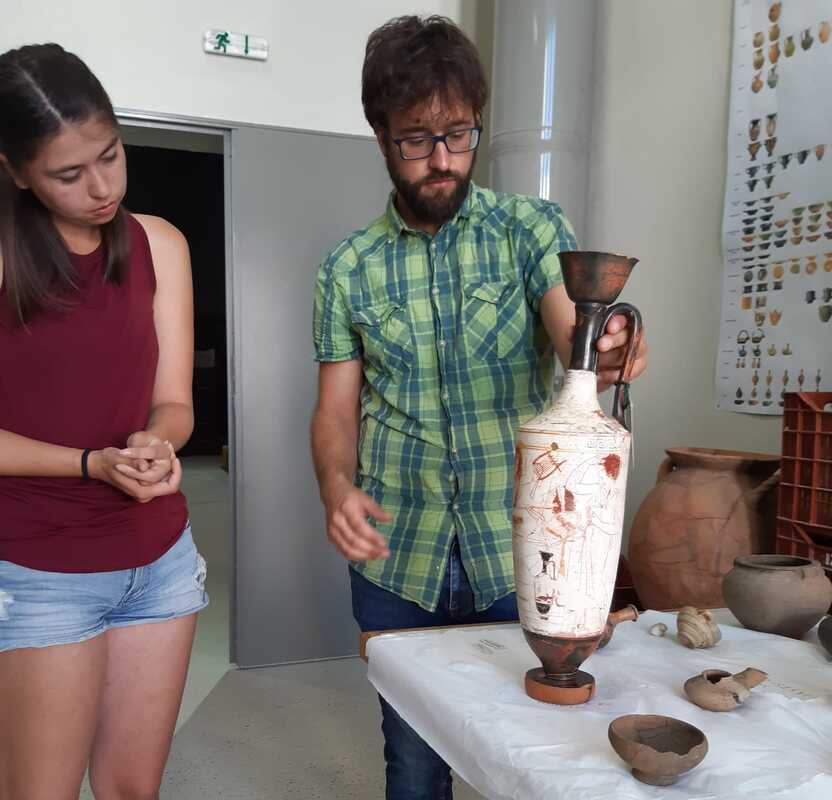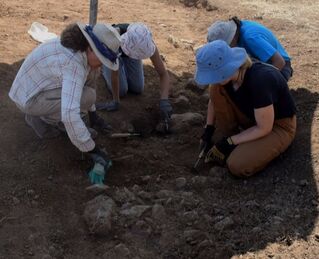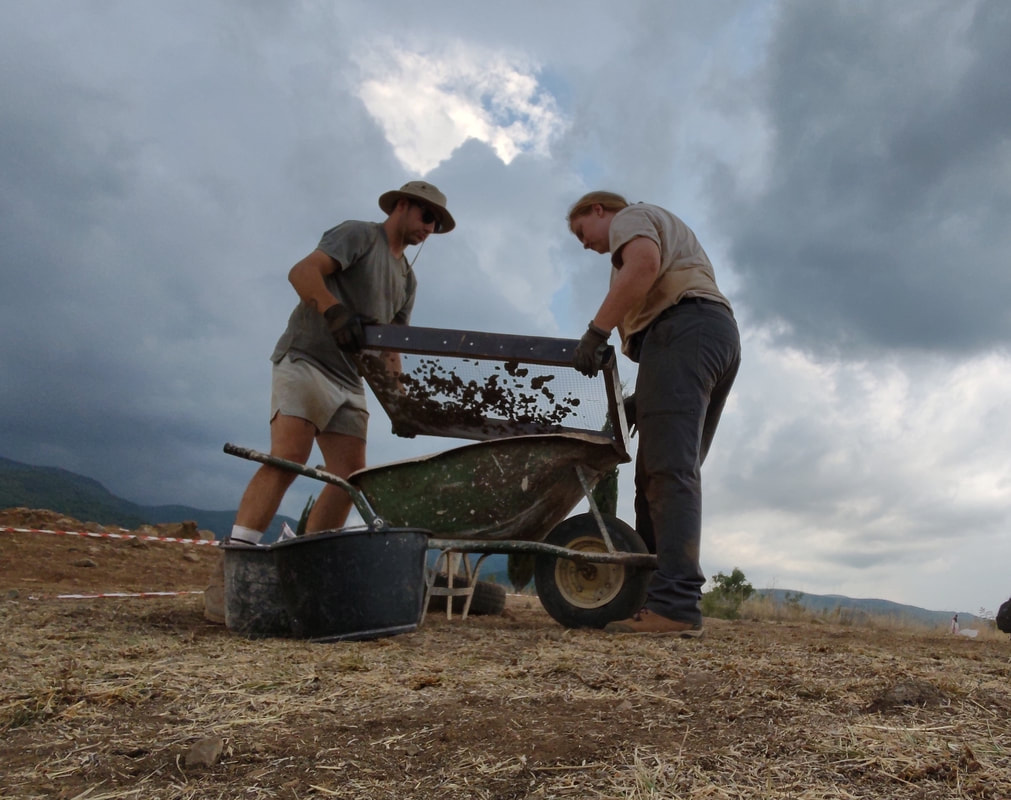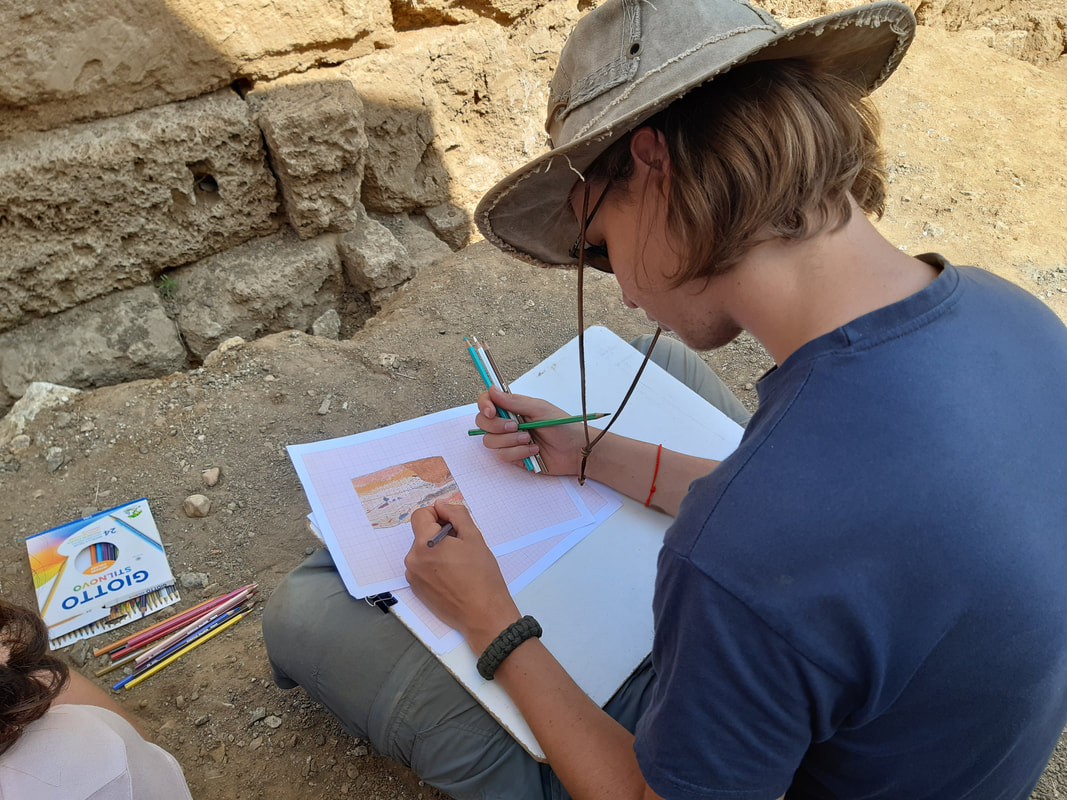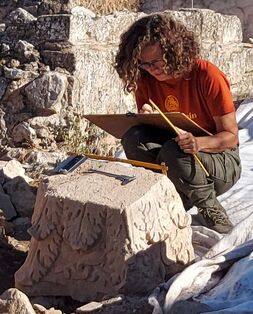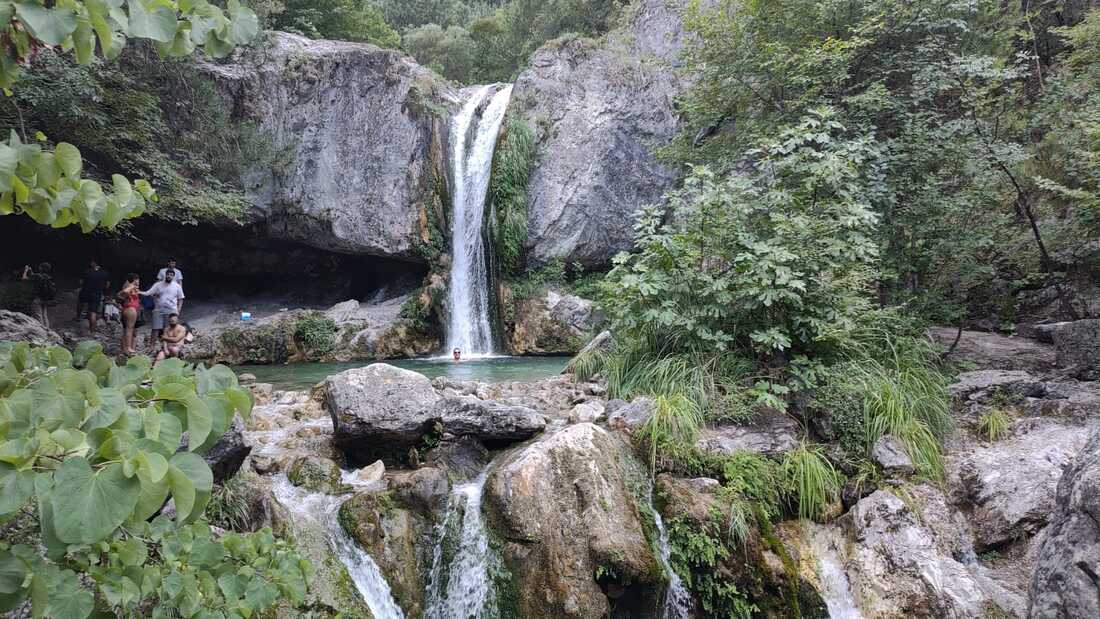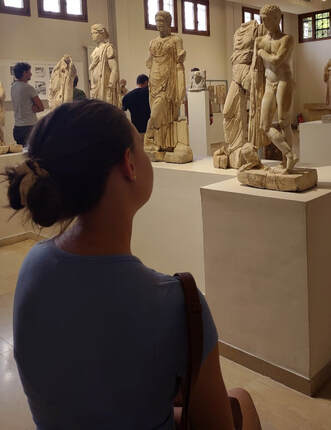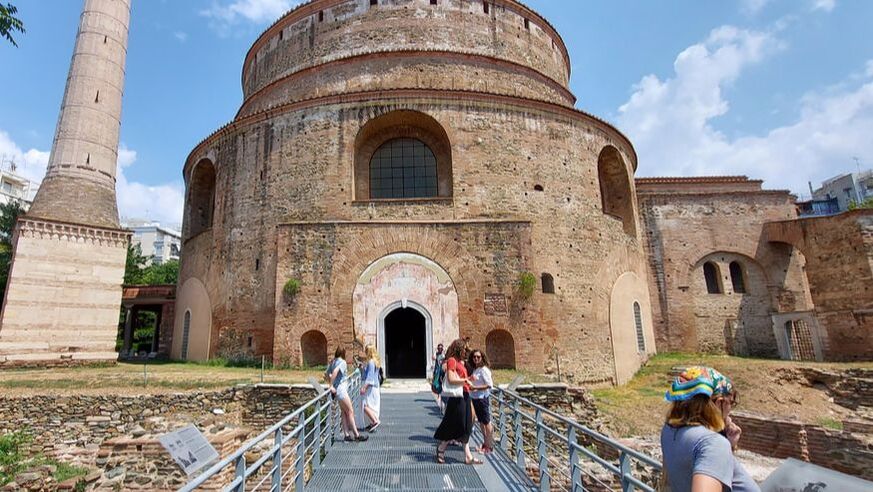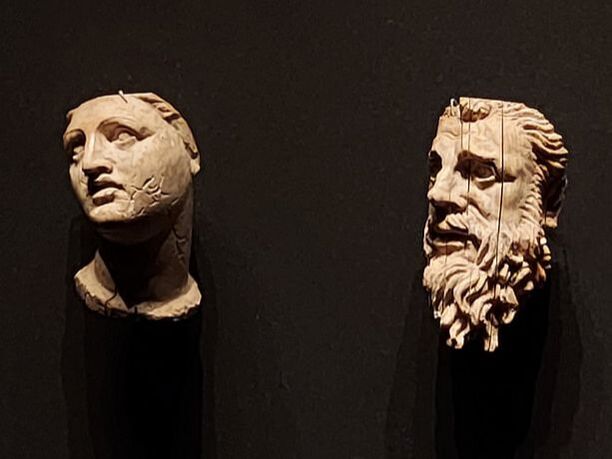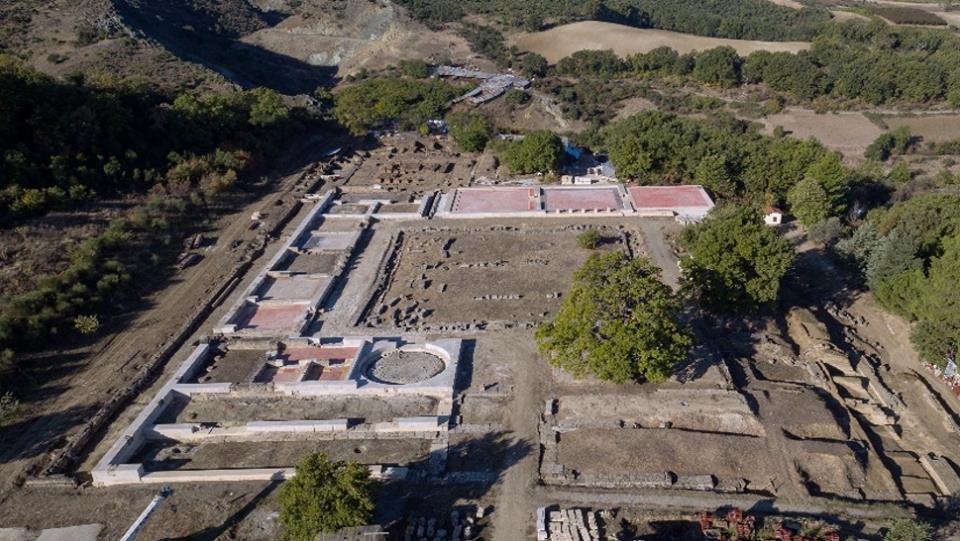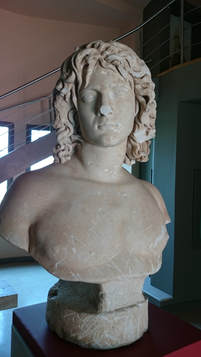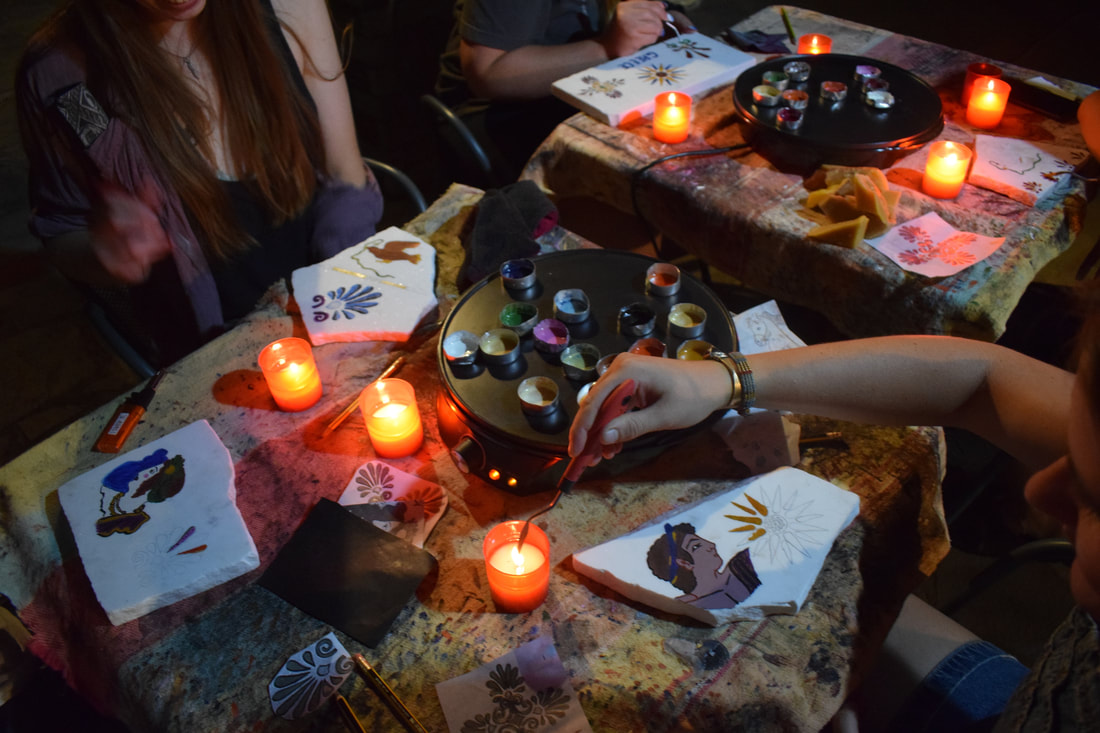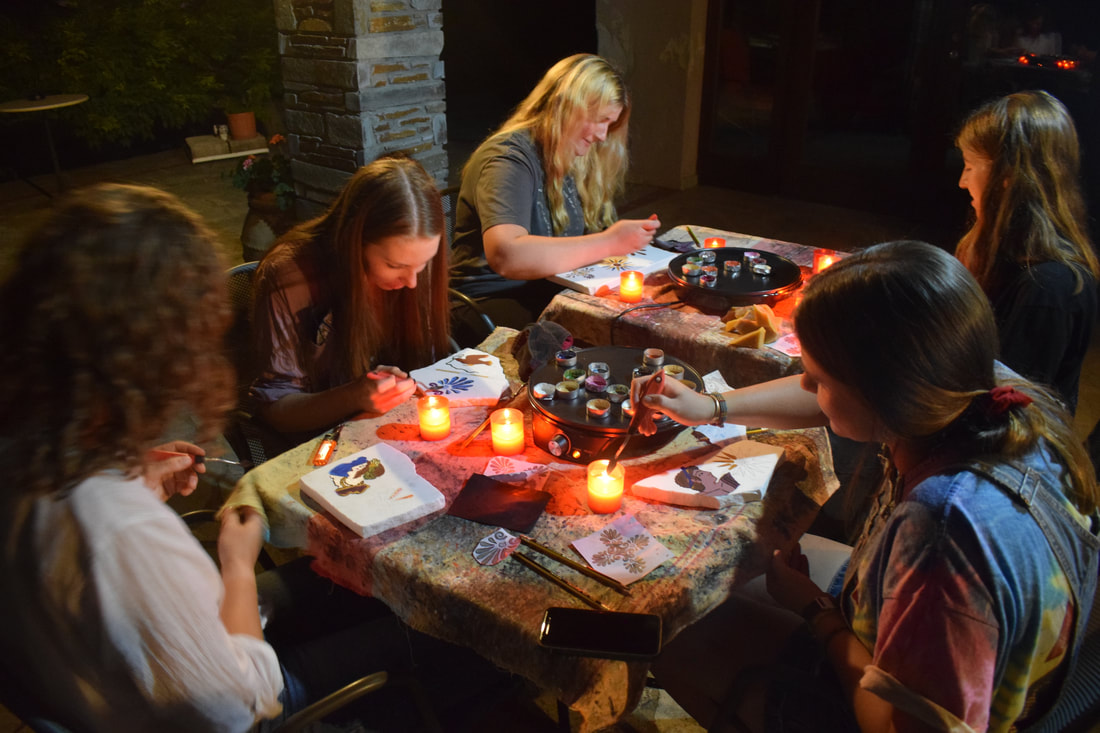|
|
FULL FOR 2023
The list of the most important archaeological remains at Aigai is endless; the Palace of Phillip II is the biggest, most elaborated and sophisticated building of Classical Greece, the theatre, the sanctuaries of Eukleia and the Mother of the Gods, the city walls, the royal necropolis, containing more than 500 tumuli, the twelve monumental temple-shaped tombs, among them the tomb of Euridice, mother of Philip II and, over all, the unplundered tombs of Philip II, father of Alexander the Great and Alexander IV. They provide the high pick of the ancient Greek art of late classical period (architecture, wall paintings, weaponry, jewellery, metal work, ivory sculpture). Discovered in 1977-8 they made a worldwide sensation. The quality of the tombs themselves and their grave-goods places Aigai among the most important archaeological sites in Europe. 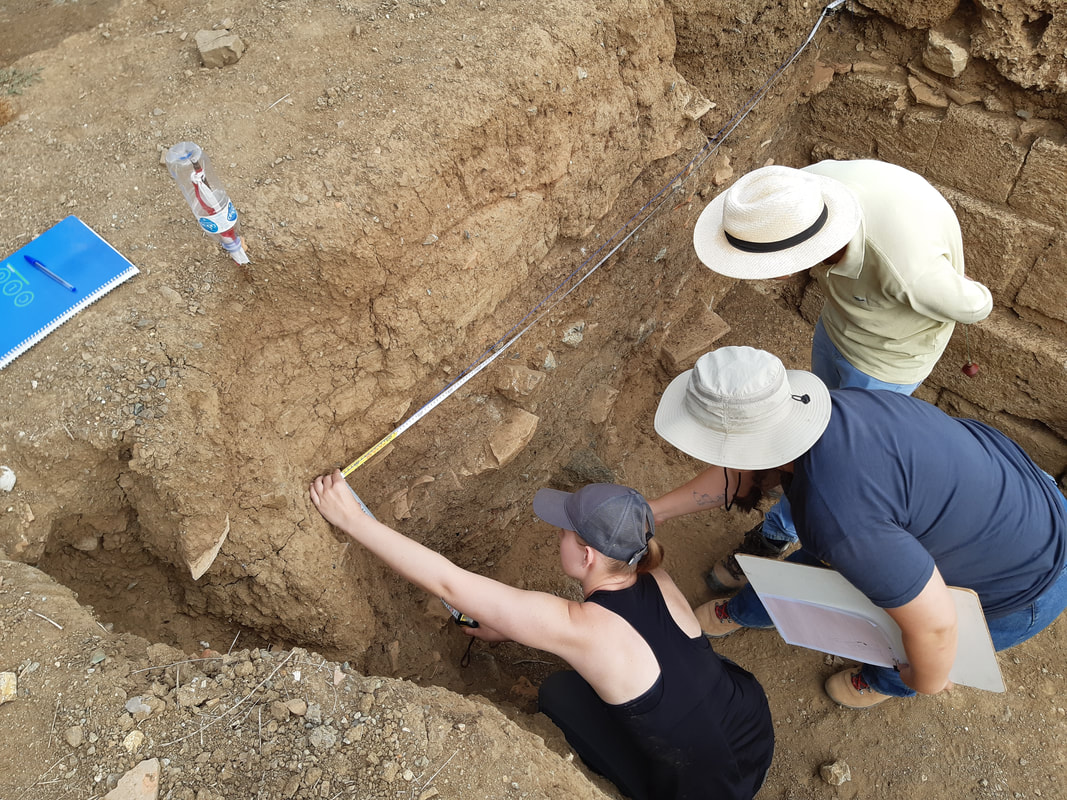
The first excavations date to 1861, a Macedonian tomb was discovered east of the Palace by Leon Heuzey and Henry Daumet. In 1922 the village of Vergina is founded by Asia Minor Greek refugees on the northeast side of the palace, using the ancient ruins for construction. The excavations at the palace started again in 1937. Manolis Andronikos started to excavate in the cemetery of the tumuli area from 1949 to 1960. In 1976 the famous archaeologist started to excavate the great tumulus and discover the tomb of Philip II and all his treasure. The media named this discovery the finding of the century. The royal necropolis of Aigai spreads between the modern-day villages of Vergina and Palatitsia. Cover an area of almost 900 ha and ha where more than 500 tumuli have been discovered, dated from the 11th to 2nd century BC. Among them, stand out twelve monumental temple-shaped tombs, like the tomb of Euridice and the unlooted tombs of Philip II, father of Alexander the Great. The cemetery contain original and unique historical, artistic and aesthetic achievements of the late classical art of extraordinarily high quality and historical importance, such as the architectural form of the royal palace and the magnificent wall paintings of the so-called Macedonian tombs, as well as objects such as the ivory portrait and miniature art, metal, gold and silver work. The structure of the area is marked by an ancient network of streets and paths that runs through low mounds (tumuli). These mounds often form small groups probably representing family or otherwise related burials. The Archaic necropolis of Aigai is located to the southwest of the Cemetery of the Tumuli. The grave markers on the tumuli were plain stones. The finds unearthed in the Archaic cemetery of Aigai, namely clay pots and figurines imported from the big traffic and commercial centers of antiquity (Korinthos, Athinai, Ionian coasts, etc.) attest to the relationship of the Macedonian kingdom with the Mediterranean Sea and the East. Cremation appears for the first time as a way of burying the eminent persons of the Archaic period. When the fire goes out, the bones are washed in wine, wrapped in a piece of cloth, collected in an urn and buried. The remains of the pyre, both holy and unclean, as is everything that comes in contact with the dead, are thrown onto the grave. Both the grave and the pyre are covered by the tumulus, as in the Iliad. In the 5th century, the practice of cremation spreads to women as well. excavation
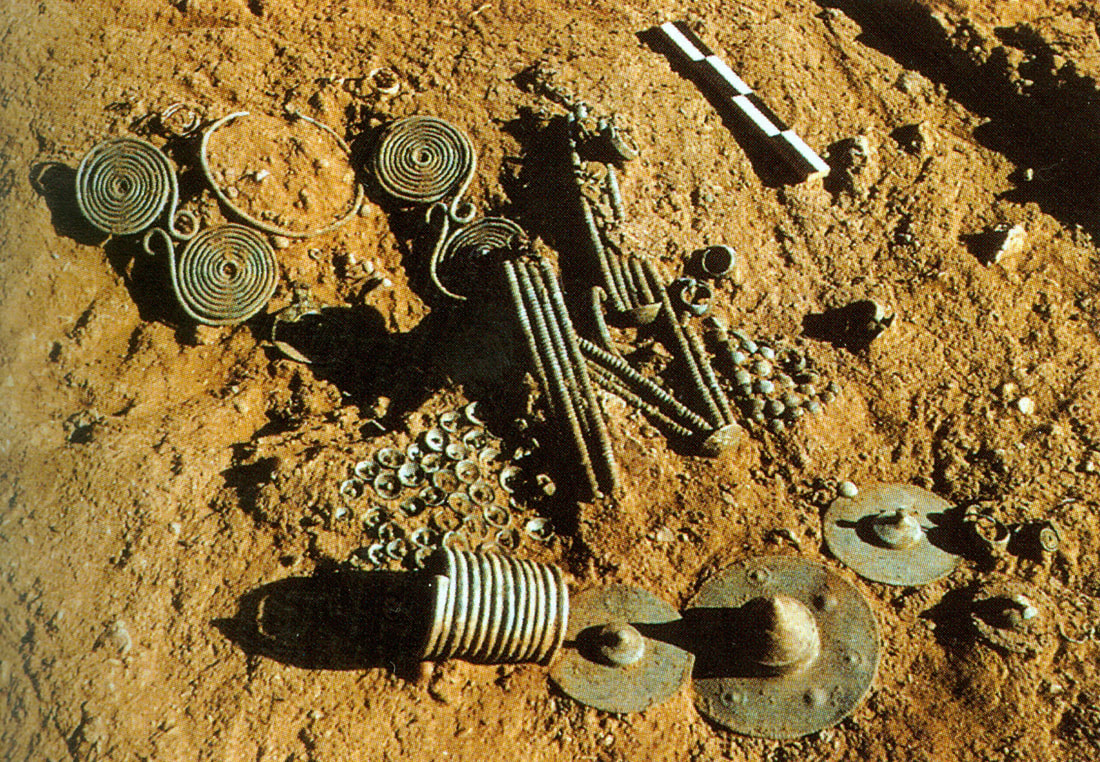
Early Archaic period (1 000-600 B. C.E.).
The practice of single inhumation prevails, with a few cases of multigle burials. Usually the dead are places in simple pit, dug underground or in the fill of the tmuli. In 58 cases the dead were places in pithoi, usually at the periphery of the tumuli. In 22 cases a different practice was chosen, since the dead were buried and their cremated remains were placed in clay corntainers. 20/22 of these secondary cremations are dated in the 7th B.C.E. Grave goods: Clay vases. Most usual are the undecorated handmade or, less frequently, wheel-made vases. Smaller percentages represent the handmade vases with incised or painted decoration. A special category are the vases bearing protogeometric decoration, most usually cups with pendant semicircles. Bronze, and less fiequently iron and gold dress ornaments (brooches, pins) and pieces of jewelry (hair ornaments, bracelets, rings etc.) as well as necklaces of stone, bone and glass beads. Bronze triple axes, found in female burials, possibly connected to some priestly office of the dead. Weapons, many iron knives and spearheads, arrowheads and some iran and bronze swords. 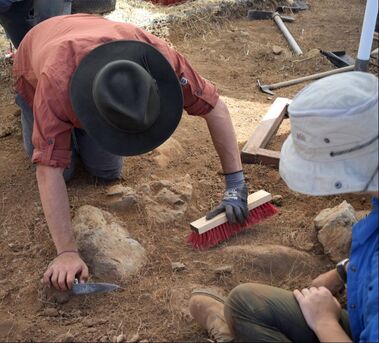
Late Classic - Hellenistic - early Roman period (middle 4th B.C.E. -1st A.D.)
A basic characteristic of the organization of the necropolis from the middle of the 4th onwards is the widespread creation and using of burial tumuli. The largest over 30m length were created to cover monumental macedonian cist graves of Late Classical-Early Hellenistic periods. Small tumuli covering fewer or single graves of a simple form . Tumuli of this kind are created throughout the Hellenistic - early Roman period. To this category belong most of the small tumuli that were investigated in the 60's during the constniction of the modern road.
Bibliography Drougou S. Saatsoglou Ch., Vergina: Reading around the archaeological site. 2005. Kottaridi, A. From Heracles to Alexander: Treasures from de Royal Capital of Macedon, a Hellenic Kingdom in the Age of Democracy. Ashmolean Museum, 2011 Kottaridi, A. Macedonian Fragments. Ephorate of Antiquities of Imathia. Eurasia Ed. 2020 Pandermalis, D. Alexander the Great. Treasures from an epic era of Hellenism. Roisman, J.; Worthington, I. A Companion to Ancient Macedonia. 2011 Daily Schedule
6:45 am Breakfast 7:00am-1:30pm Excavation 2:30pm Lunch 3-6pm free time 6-7,45pm Laboratory/Lectures/Afternoon excursions 8:00pm Dinner Lectures/Workshops Stratigraphy and archaeological record A brief history of ancient Macedonian Archaeology in the Royal necropolis o Aigai Greek vases Practical workshop on ancient greek painting techniques Excursions: Hole day: Dion: archeological site and Sanctuary of St. Dionisos in Mount Olympus Pella: archaeological site and Museum. Thessaloniki: An old city monumental trip: roman ruins and archaeological museums Afternoon excursions: Museum of the Royal Tombs of Aegae, containing the burial cluster of Philip II of Macedon The royal palace and the theatre of Aegae Polycentris Museum of Aegae Agios Dimitrios. Palatitsia: The church is characterized by its lavish wall paintings Veria: Cathedral-Jewish quarter-Archaeological and Byzantine museums accommodation
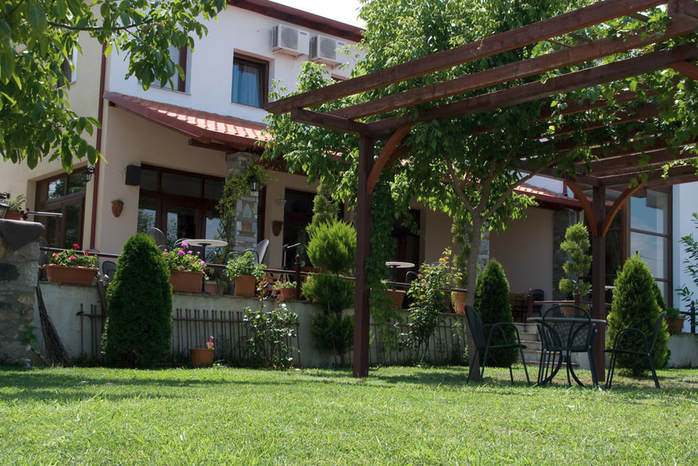
Click here to edit.
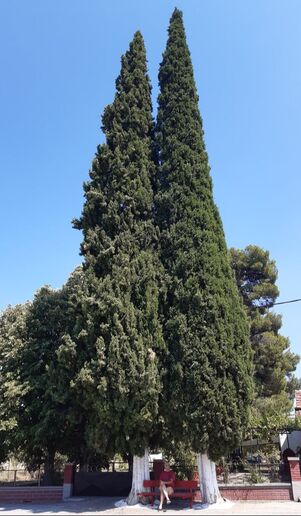
The hotel is opposite the royal tomb of Evridiki. The traditional Macedonian architecture of Hotel, knitted in harmony with the natural beauty of the area and the region, create the ideal environment for accomondation and relaxing getaways in history and nature.
The hotel have fully equipped and spacious rooms, double, triple and four-bedded, with balcony overlooking the ancient palace of Aigai, The rooms have air conditioning, a telephone, a refrigerator, satellite TV, hairdryers, a bathroom and free Wi-Fi. The hotel has a lounge with satellite TV where you can relax and play board games. Meals: Breakfast will be provided at the hotel, along with a sandwich for the mid morning break on-site. We will enjoy lunch and dinner at a local restaurant where they will cook a fix menu with different dishes from the traditional Greeck cusine. Dates and feesProgram Dates 2023
July 31 - August 19 FULL FOR 2023 Fees: US$ 3,150 Program Fees Include: Full room and board Fieldwork training Excursions and other activities Transportation to and from airport on the first and last days of the program Daily transport to the site Medical Insurance Application fee Administrative costs Certificate of 120h Part of your fee will go towards the research project. Fees DO NOT include airfare. PAYMENT PROCESS:
To reserve a space, you must pay a $400 application fee. (Included in the price of the program). The remainder of the program cost will be due by May 1st. Application fees will be refunded if the applicant is not selected. Application Deadline: Rolling application. We accept applications until all spaces are filled. Cancellation and Refund Policy: -Before March 1st: All payments, except for $80 from the application fee, are refundable. -After March 1st: Application fee non-refundable. The remaining balance is refundable. -After May 1st: All payments are non-refundable unless your application is rejected by the program director. Travel Arrangements: You should begin making travel arrangements as soon as your place in the group is reserved, and you should complete them upon being notified of your selection. We strongly recommend that participants purchase travel insurance to cover all needs including medical, accident, baggage loss, delays and personal liability. ArchaeoSpain is not a travel provider nor is a registered travel agent. Your travel arrangements to and from Greece are subject to the terms and conditions of your travel agency. In the rare event that the program is cancelled, ArchaeoSpain will refund program fees, but is not responsible for non-refundable airline or other tickets or payments or any similar penalties that may be incurred. It is your responsibility to protect yourself against airline and travel agency cancellation fees. Medical Insurance:
All ArchaeoSpain participants are covered with an insurance packet that provides medical and surgical treatment and prescription drugs in case of accident or sudden illness. This insurance also provides some compensation for baggage loss or theft. With your program packet we will send you more details regarding this coverage, but you may contact our staff for more information. European students should bring an EHIC card with them. Right of Refusal: ArchaeoSpain reserves the right to refuse an applicant’s selection. This is a rare occurrence and is most likely due to a person’s inability to meet health requirements or in the interest of group compatibility. Once in the field, the program director and ArchaeoSpain reserve the right to send a participant away from the program should that person’s behavior compromise the safety, research objectives and general performance of the group, or violate Greek laws, regulations or customs. the staffSITE DIRECTOR
As part of one of Archaeospain's programs, you agree to respect the archaeological sites and monuments in accordance with the laws of each country, and to accept the code of ethics that does not allow taking photographs of the archaeological sites or of the discoveries made in them. The publication of photographs related to the sites and their findings, especially on social media, need always the prior approval of the directors of the archaeological sites.
excursionsDion and mount Olympus
The Dion archaeological site covers roughly 150 hectares on the Olympus mountain’s flanks. Since the time of Arquelao (414-399 B.C.), a 9-day festival dedicated to Olympian Zeus has been held. Philip II and Alexander the Great celebrate their victories with splendid sacrifices at the sanctuary of Zeus. The city was given a new lease of life in 32/31 BC, when Octavian founded a Roman Colonia Julia Augusta Diensis. The Dion archaeological site constitutes the hub of a spacious and well-organized archaeological park of 150 hectares. Outside the walls, archaeologists have unearthed the sanctuaries dedicated to Zeus, Demeter and to Isis (the Egyptian goddess was a favorite of Alexander). Alexander assembled his armies in Dion before beginning his westward wars of conquest. The museum of Dion includes statues, votive and grave monuments, architectural members, coins, and a variety of other objects that were discovered in the sanctuaries, the baths.
Thessaloniki:
Byzantine and Archaeological museums, roman Agora, Arch and Rotonda of Galerius, White Tower. Thessaloniki is the second largest city of Greece. Built near the sea it is a modern metropolis bearing the marks of its stormy history and its cosmopolitan character, which give it a special beauty and charm. Archaeological remains: The ancient forum (dated to the late 2nd or the early 3rd century AD) with squares, porticoes, additional buildings and odeum (293-395 AD), the palace complex of Galerius Maximianus (4th c. AD), the thermae, the hippodrome, the temples. In the south square, is the famous Stoa of the Idols, which was two-storeyed and lavishly decorated. The Triumphal Arch of Galerius (Kamara), built in AD 305. The Rotunda is an early 4th century building which later was converted into a Christian church. Byzantine monuments: City walls, archaeological site of a cemetery basilica, a martyrion and Early Christian graves, the byzantine bathhouse ), The Heptapyrgion castle that was raised in stages, from the early years of the Byzantine Age into the Ottoman period and several churches like these of Acheiropoietos (5th century), the Holy Wisdom of God (Hagia Sophia) (7th century), the Panaghia (Virgin) Chalkeon (1028), Agios Demetrios a splendid basilica dedicated to the patron saint and protector of the city, etc. Vergina Royal Tombs
In 1977-8 the royal tombs were discovered by the archaeologist Manolis Andronikos. Until their discovery, the tombs were covered by a tumulus 13 m high and 110 m across. It must have been constructed at the beginning of the third century bc by Antigonos Gonatas, to protect the royal tombs from further pillaging after marauding Galati had looted and destroyed the cemetery. The museum was comstructed undergrownd in 1993 to enclose and protect the royal tombs. From the outside, the building looks like an earthen mound; inside, the treasures found in the royal tombs have been on display since November 1997. Apart from the sepulchral monuments themselves, there is an open area of 1,000 sq.m., where the finds from the tombs are displayed in showcases. Lighting is very subdued to draw visitors’ undivided attention to the exhibits. The royal palace and the theatre of Aigai
Constructed during the reign of Philip II (359-336 BC), the palace of Aigai is not only the biggest but, together with the Parthenon, the most significant building of classical Greece. Built on a raised outcrop of the hill, this huge building –the biggest in classical Greece and three times the size of Parthenon- was visible from the whole Macedonian basin; a remarkable landmark, a symbol of power and beauty. The palace of Aigai was designed for Philip and constructued probably by architect Pytheos. It isA unique building, utterly revolutionary, will become an archetype of all basileia (kingdoms). Veria (Berioa): Cathedral-Jewish and old quarters-Archaeological and Byzantine museums. Veria stands on a high plateau in the east foothills of Mount Vermion and has been continuously inhabited from at least the Archaic period until the present day. The original core of the city was a small area that was converted about the end of the 4th century BC into an organised urban centre, and experienced its first great period of prosperity as early as the 3rd century BC.
Thanks to its geographical position and the fertile land by which it was surrounded, it developed as early as the 4th century AD into a prominent administrative, military and ecclesiastical centre of the empire. It was adorned in Early Byzantine times with brilliant religious and secular huildings testifying to the changes in urban design brought about in the new era. The earliest of these buildings is the Baptistery on Edessis Street (second halfof the 4th century). Agios Dimitrios. Palatitsia:The church of Agios Demetrios at Palatitsia has been rebuilt with architectural elements from the royal palace of Philip II at the location of a Byzantine cemetery in the 16th century AD. The church is characterized by its lavish wall paintings and its well-maintained construction which is evidence of the economic prosperity of the region’s inhabitants and the artistic peak of the area during these times.
The temple, which is designated as a monument by UNESCO, remained closed and deserted for decades, until 2017 when studies regarding its restoration and maintenance were approved. Rich interior decoration, with rare wall paintings, is added to the admirable architectural design of the structure and the refined construction. Half of the wall paintings were created by Nicholaos Zografos and “narrated” the life of Christ and Saint Demetrios, portrayed saints, prophets and martyrs of the Church, the Assumption of the Theotokos and the Platytera of Heaven. The rest of the wall paints, which belong to an unknown artist, depict the Last Judgment while among the figures of the triumphant and victorious stands Alexander the Great. This is a rare presentation of high aesthetics and great historical value. survivors' talesThis is the first year of this incredible project and we would love your comments after your Greeck experience. Here you have some notes from people who were on the field with us in past years.
This is not to say that science lost to speed. Far from it! Though the somewhat strange ‘triangle’ method made for shoddy plotting of artifacts in the field, when we returned to our headquarters we were able to plot those points with precision. Everyone took very detailed notes of what was done every day and made plan maps, so at the end of the dig there were seventeen different accounts of what was done. Katherine Sargent 2016 “I really could not have hoped for a more wonderful introduction to both archaeology and Spain itself! I enjoyed every moment, from swimming in the pool to taking the wheel barrow to our excursions to other towns.” Celeste Mc Ilwaine, 2014 ”It was such a wonderful experience! I learned so much!. I miss Spain and the wonderful times I had with you all! … I know everyone involved will be having a great time and learning so much!” Cady V. Rutherford, 2013 application | ||||||||||||||||||||||

